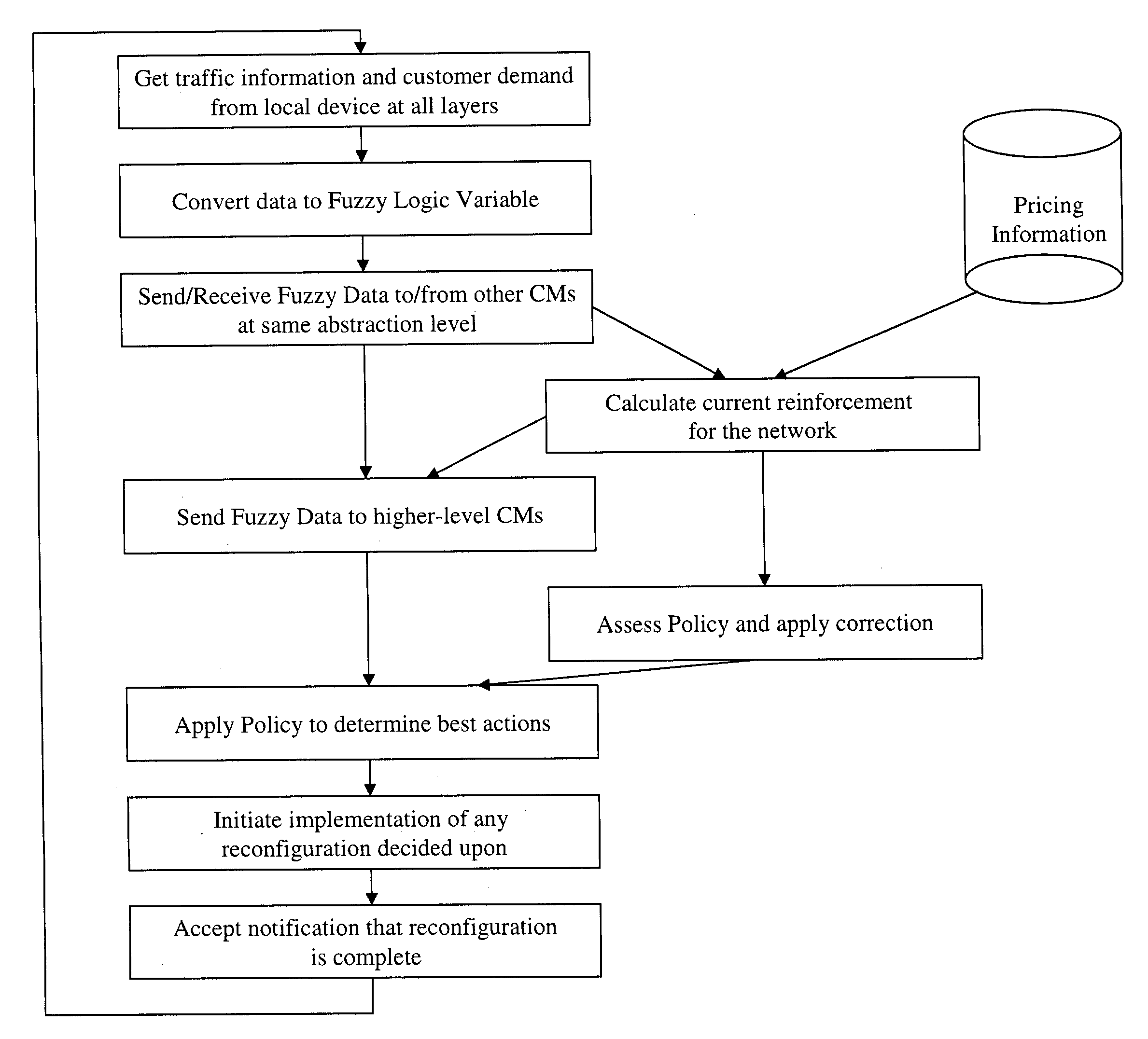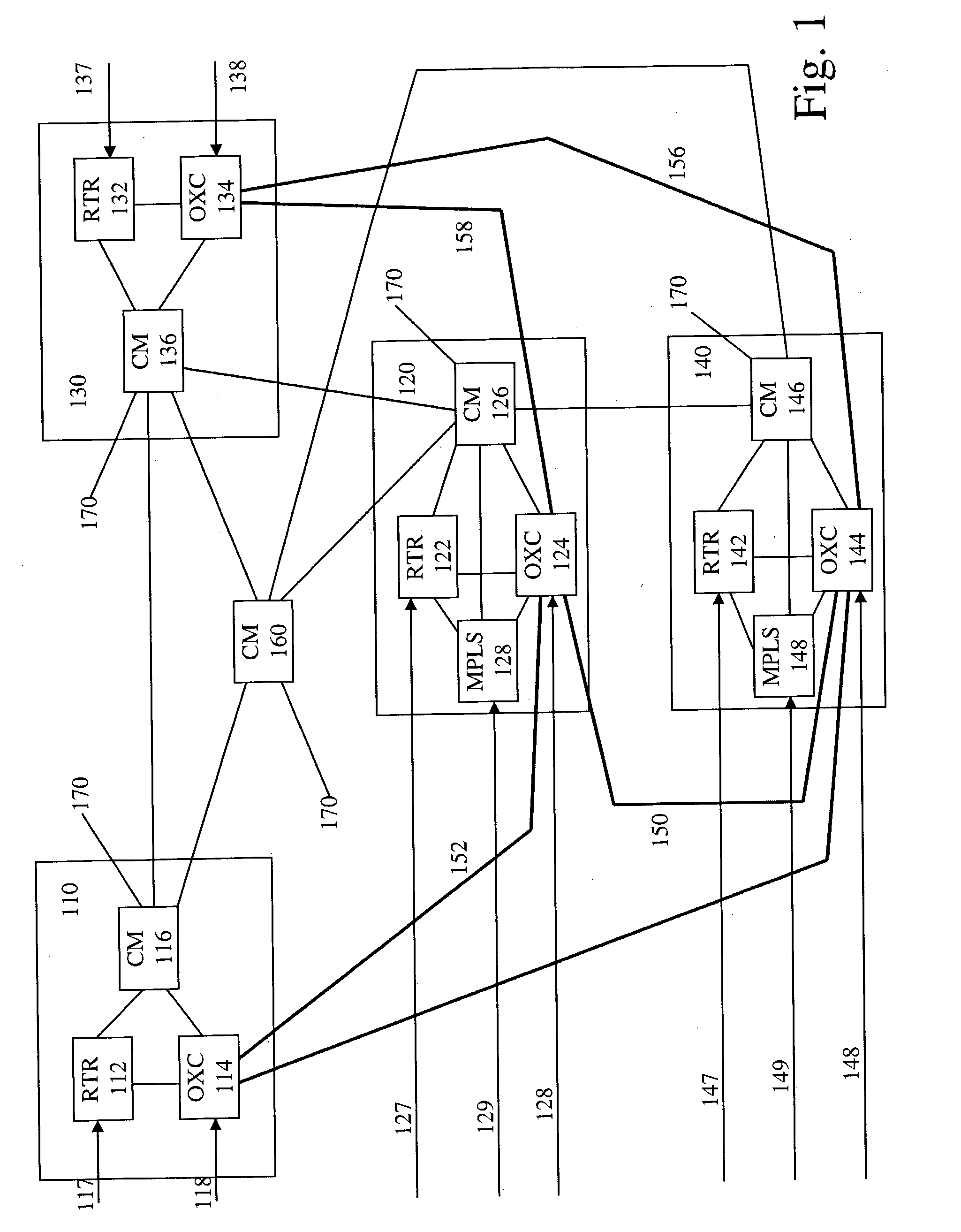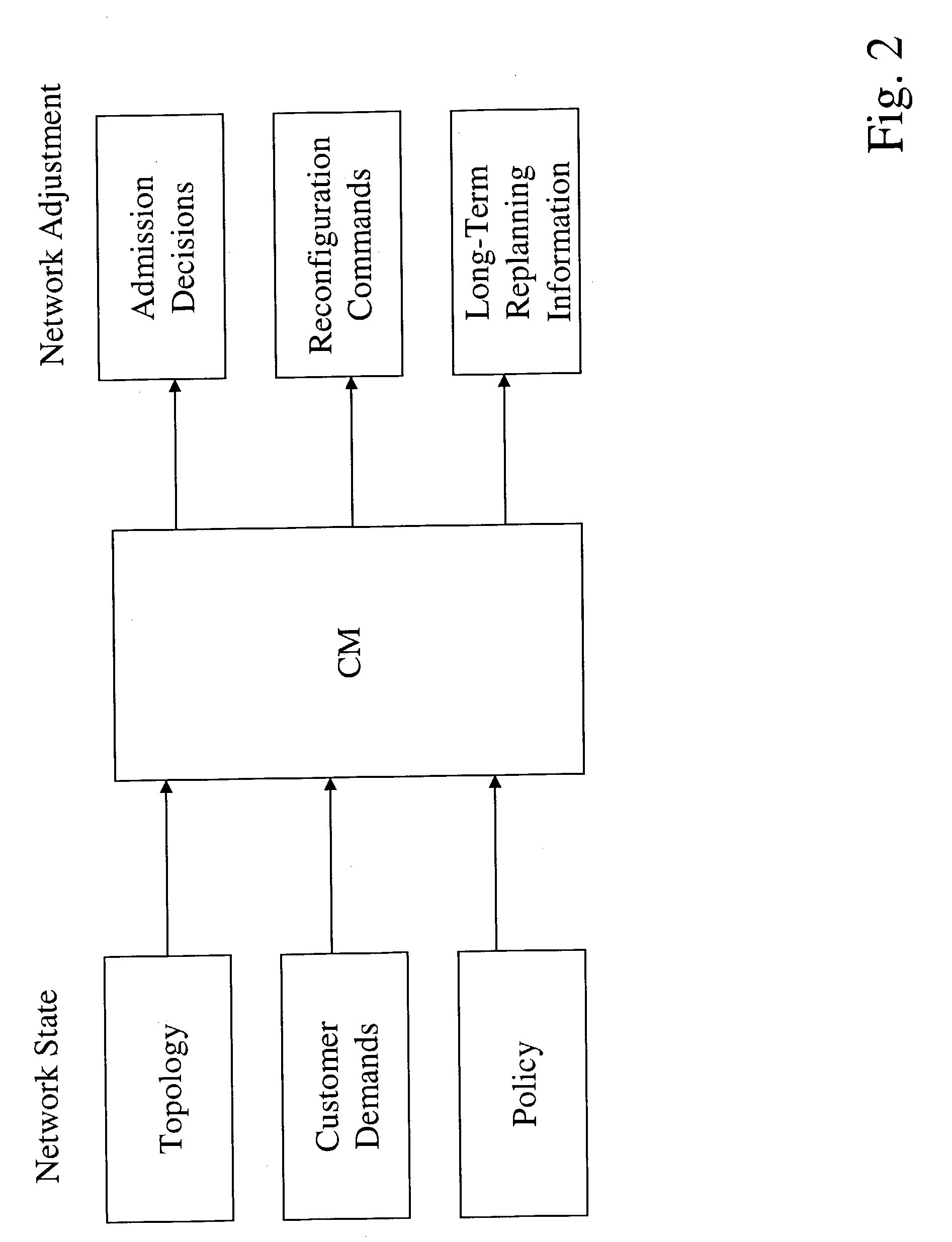Methods and apparatus for controlling multi-layer communications networks
a communication network and multi-layer technology, applied in data switching networks, frequency-division multiplexes, instruments, etc., can solve the problems of insufficient control insufficient demand for skilled network operators, and insufficient control function in one layer, so as to reduce or eliminate the effect of insufficient control function
- Summary
- Abstract
- Description
- Claims
- Application Information
AI Technical Summary
Benefits of technology
Problems solved by technology
Method used
Image
Examples
Embodiment Construction
[0054] In order to lighten the description of the embodiments, the following accronyms will be used throughout this specification:
1 ATM Asynchronous Transport Mode CM Control Manager CMAC Variously "Cerebellar Model Articulation Controller" or Model "Cerebellar Arithmetic Computer" IP Internet Protocol MPLS Multi-Protocol Label Switching OXC Optical Cross-Connect SDH Synchronous Digital Hierachy SLA Service Level Agreement SONET Synchronous Optical Network WDM Wavelength Division Multiplexed
[0055] FIG. 1 is a block schematic view of a communications network 100 that supports services at more than one network Layer. In FIG. 1, Layer 3 services, such as Internet Protocol (IP) services, Layer 2 services such as ATM or MPLS and layer 1 services such as switched optical connections, switched fibres or switched Wavelength Division Multiplexed channels are shown according to an embodiment of the invention. The network 100 comprises a plurality of nodes 110, 120, 130, 140 interconnected by ...
PUM
 Login to View More
Login to View More Abstract
Description
Claims
Application Information
 Login to View More
Login to View More - R&D
- Intellectual Property
- Life Sciences
- Materials
- Tech Scout
- Unparalleled Data Quality
- Higher Quality Content
- 60% Fewer Hallucinations
Browse by: Latest US Patents, China's latest patents, Technical Efficacy Thesaurus, Application Domain, Technology Topic, Popular Technical Reports.
© 2025 PatSnap. All rights reserved.Legal|Privacy policy|Modern Slavery Act Transparency Statement|Sitemap|About US| Contact US: help@patsnap.com



